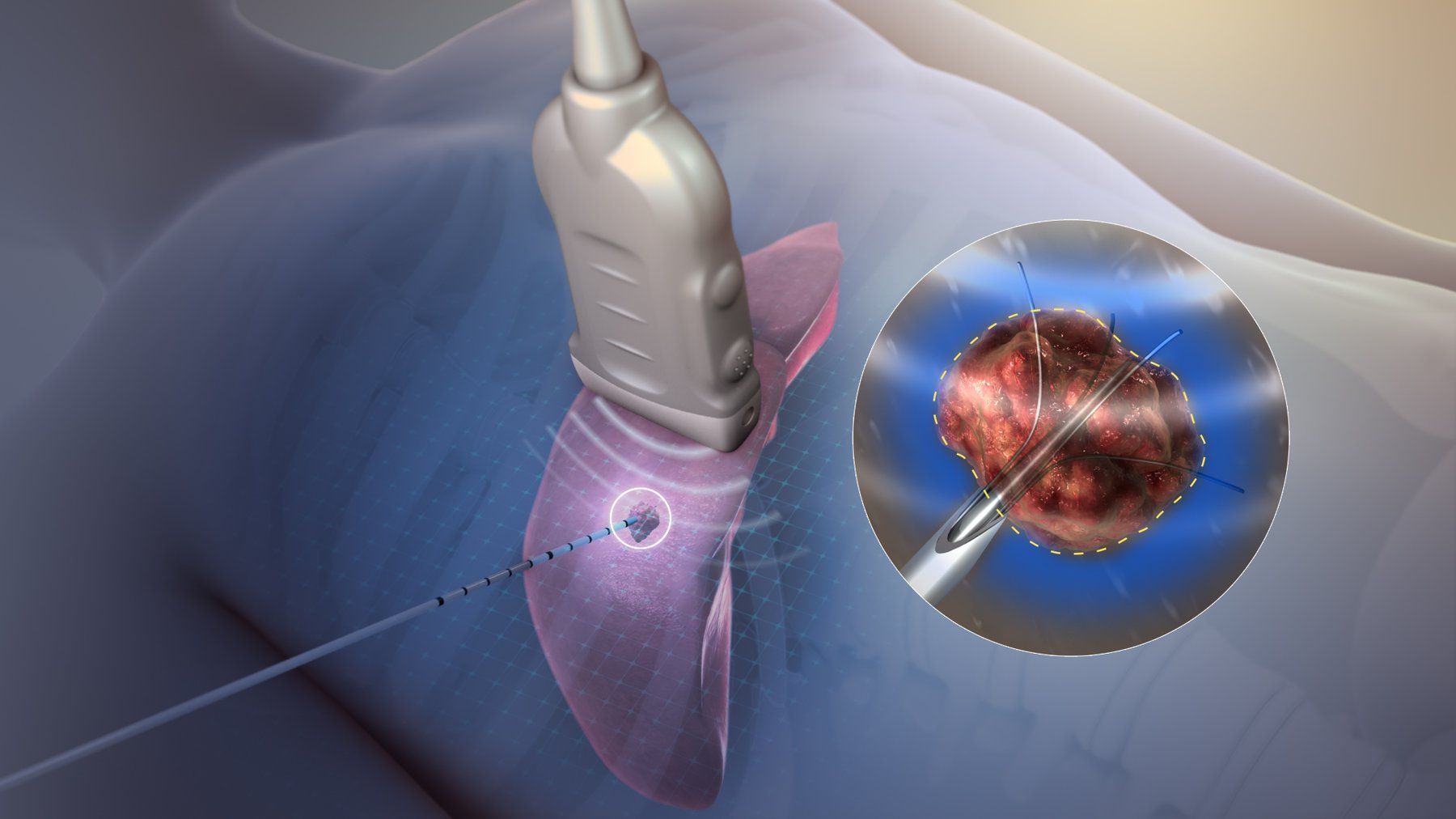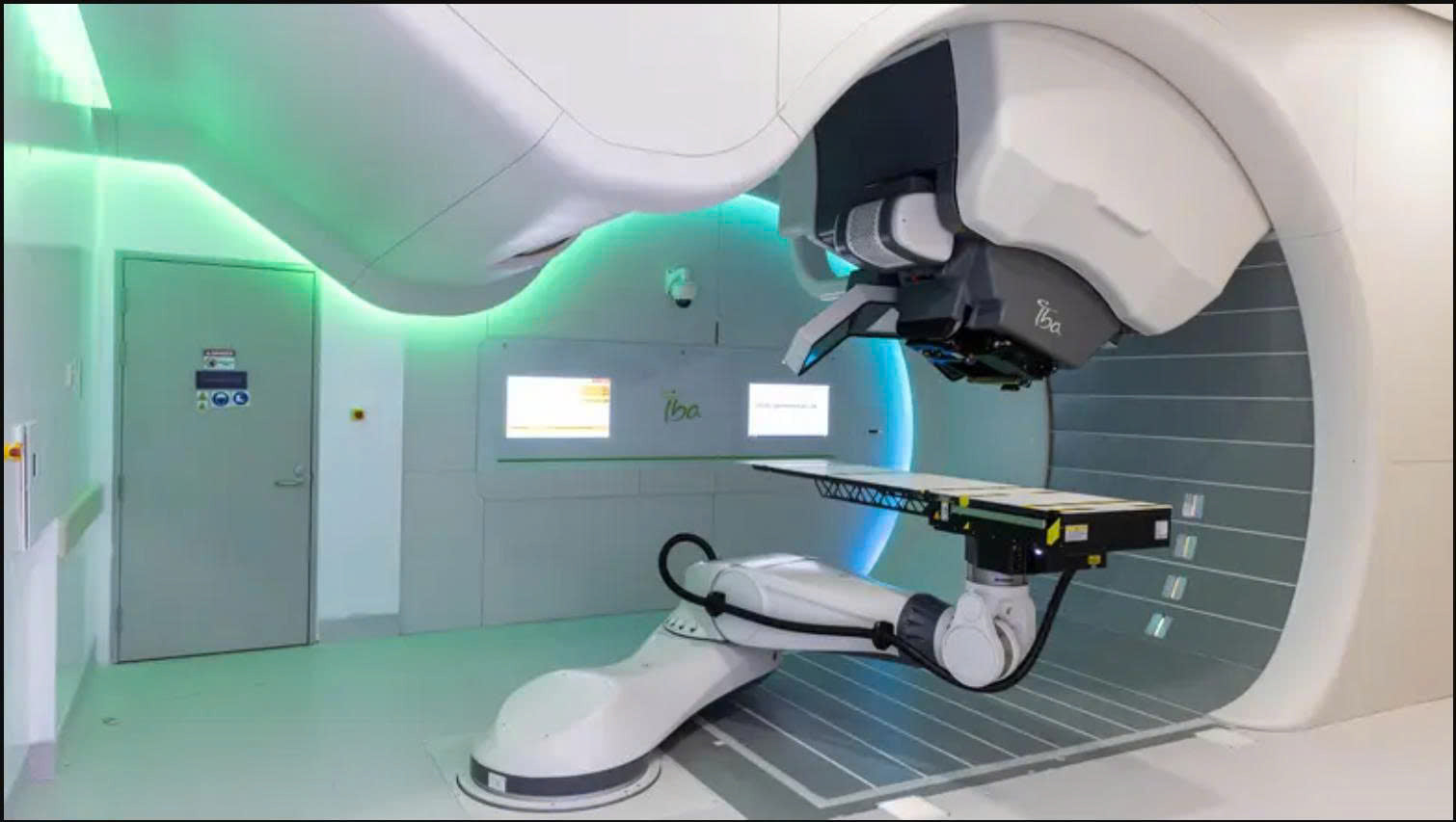HIGH FREQUENCY ABORTION AND EMBOLIZATION

Radio Frequency Ablation (RFA)
For inoperable liver tumors, radiofrequency ablation (RFA) offers a non-surgical, localized treatment that destroys tumor cells with heat while preserving healthy liver tissue, making it much easier for patients to manage than systemic therapy.
Radiofrequency energy can be delivered without affecting the patient's overall health, allowing the patient to resume normal daily activities within a few days.
 Implementation Process
Implementation Process
In this procedure, an interventional radiologist guides a small electrode through the skin into the tumor under the guidance of a computed tomography (CT) scan or ultrasound. Mild radiofrequency energy (similar to microwaves) is then delivered to the needle tip, where it is converted to heat. The heated electrode creates a precise, focused area of tumor destruction with very little risk of damaging adjacent normal structures. The dead tumor tissue shrinks and gradually forms a scar.
Treatment Effectiveness
Depending on the size of the tumor, RFA can shrink or destroy the tumor, prolonging a patient's survival and significantly improving quality of life when living with cancer.
- Small tumors : RFA gives similar results as surgery
- Larger tumors : Using RFA may provide patient comfort
Safe and Repeatable
Because it is a local treatment that does not harm healthy tissue, the treatment can be repeated as often as necessary to keep the patient comfortable. It is a very safe procedure, with a complication rate of about 2% to 3%, and has been available since the late 1990s.
Symptom Relief
By reducing the size of large tumors, or treating new tumors in the liver as they arise, pain and other debilitating symptoms caused by tumors can be alleviated. Although tumors themselves may not cause pain, they can still cause pain when they press on nerves or interfere with vital organs.
RFA is effective for small to medium sized tumors and emerging technologies will allow treatment of larger cancers in the future.
Chemoembolization
Chemoembolization is another minimally invasive treatment for liver cancer. Chemoembolization may be used when there is too much tumor to treat with RFA, when the tumor is in a location that cannot be treated with RFA, or in combination with RFA or other treatments.
How It Works
Chemoembolization delivers high doses of cancer-killing drugs (chemotherapy) directly to an organ while also depriving the tumor of its blood supply by blocking, or occluding, the arteries that feed the tumor.
Implementation Process
Using imaging for guidance, the interventional radiologist threads a small catheter up the femoral artery in the groin into the blood vessels supplying the liver tumor.
Embolic agents keep chemotherapy drugs in the tumor by blocking their flow to other areas of the body. This allows higher doses of chemotherapy drugs to be used, because less of the drug can circulate to healthy cells in the body.
Recovery Time
Chemoembolization usually requires hospitalization for two to four days. Patients often have lower than normal energy levels for about a month afterward.
Therapeutic Properties
Chemoembolization is a palliative treatment, not a cure. It can be extremely effective in treating primary liver cancer, especially when combined with other therapies. Chemoembolization has shown early promise for some types of metastatic tumors.
Conclude
Advances in interventional radiology have made it possible to destroy tumor cells without harming surrounding tissue. Two procedures, tumor ablation and chemoembolization, offer hope to patients with inoperable tumors.
Using imaging techniques to guide the needle through the skin and into the tumor, interventional radiologists apply heat to destroy the tumor. These doctors also deliver high doses of cancer-killing drugs directly to the site while cutting off the tumor's blood supply.
Tumor ablation and chemoembolization are just two of the many minimally invasive, targeted treatments offered by Interventional Radiologists.
-------------------------------------------------------------------------------------------
👉 Contact SunCare for medical support and advice as well as professional private jet transportation services 🇸🇬 SUNCARE PTE. LTD SINGAPORE
🏠 Add: 10 Anson Road, #10-11 International Plaza, Singapore 079903
☎️ Hotline: +65 96727717 (Dr. Lien Minh - Director) Zalo, Viber
📨 Email: suncarehealth@gmail.com





